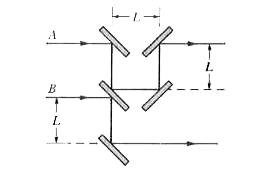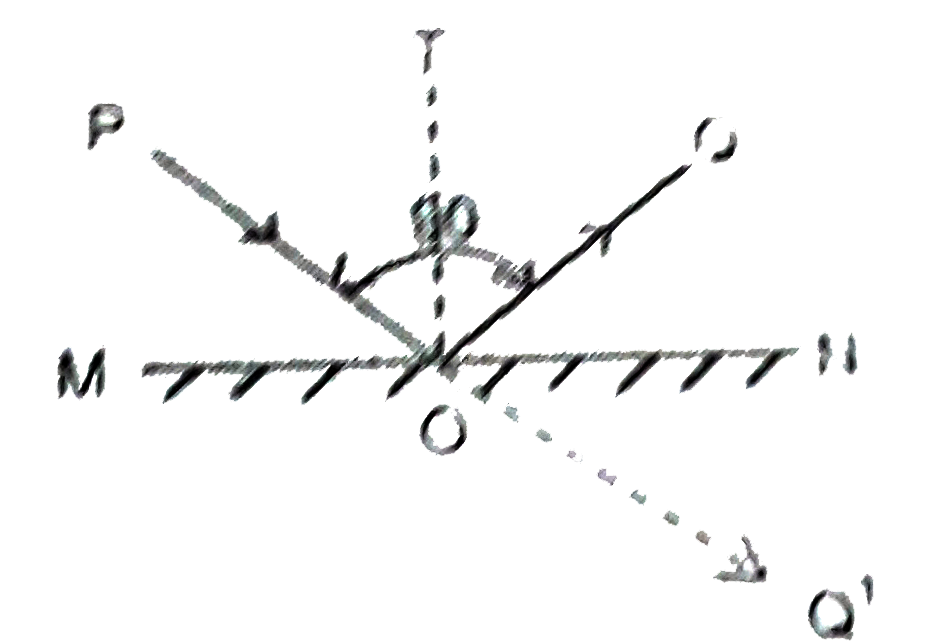In the figure shown, light waves A and B both of wavelength λ are initially in phase and travelling rightward as incident by the two rays. Wave A is reflected from four parallel surfaces but ends up travelling in original direction. The possible value(s) of distance L in terms of wavelength λ in figure which put A and B exactly out of phase with each other after all the reflected is/are

λ/2
3λ/2
3λ/4
λ
The correct Answer is:C
Topper's Solved these Questions
- WAVE OPTICSBook:DC PANDEYChapter:WAVE OPTICSExercise:For JEE Advanced Only one option is correct
Explore 23 Videos
- WAVE OPTICSBook:DC PANDEYChapter:WAVE OPTICSExercise:For JEE Advanced B. More than one option is correct
Explore 5 Videos
- WAVE OPTICSBook:DC PANDEYChapter:WAVE OPTICSExercise:medical entrances
Explore 42 Videos
- SOLVED PAPERS 2018Book:DC PANDEYChapter:SOLVED PAPERS 2018Exercise:JIPMER
Explore 22 Videos
Similar Questions
In Fig., sound waves A and B, both of wavelength λ , are initially in phase and traveling rightward, as indicated by the two rays. Wave A is reflected from four surfaces but ends up traveling in its original direction. Wave B ends in that direction after reflecting from two surfaces. Let distance L in the figure be expressed as a multiple q of λ:L=qλ. What are the (a) smallest and (b) third smallest values of q that put A and B exactly out of phase with each other after the reflections?

View SolutionIf a wave of wavelength λ is travelling in a medium with velocity V, then its frequency is
View Solution
Knowledge Check
The change in phase if a wave is reflected from a rigid surface is
AzeroBπ radianC2π radianDπ2 radianWhen a wave is reflected at a rarer surface,the change in phase is
A0Bπ/2CπD3π/2The change in phase, if a wave is reflected at a less dense surface, is
AzeroBπ radianCπ2 radianD2π3 radian
A sound source emits two sinusoidal sound waves, both of wavelength λ, along paths A and B as shown in figure.The sound travelling along path B is reflected from five surfaces as shown and then merges at point Q, producing minimum intensity at that point.The minimum value of d in terms of λ is :

View SolutionA ray of light of wavelength λ is incident on mirror at an angle of incidence 60∘. The wavelength of light after reflection will be
View SolutionIf a light ray is reflected from a mirror as shown in the figure, then

View SolutionIf a light ray is reflected from a mirror as shown in the figure, then

View SolutionA wave is reflected from a rigid support. The change in phase on reflection will be
View Solution

